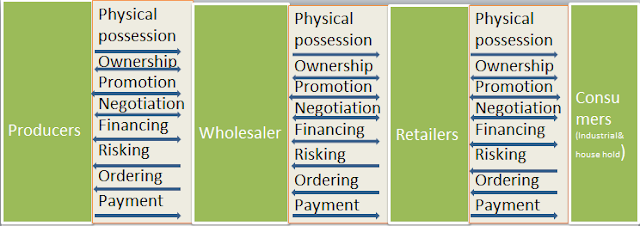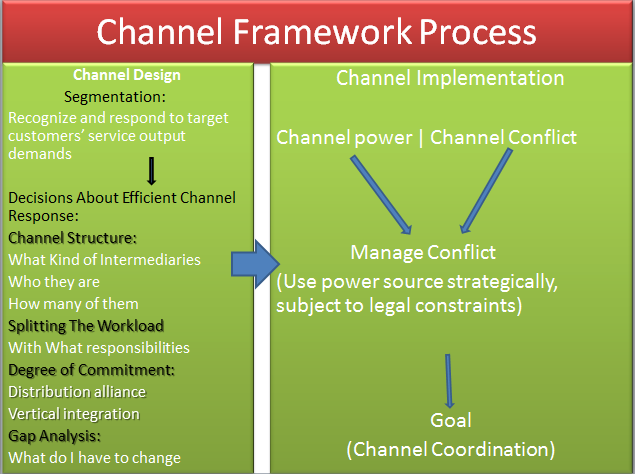A marketing channel is a set of interdependent organisations involved in
the process of making or manufacturing a product or providing service available
for end user consumption or use.
There are four level of channels:
There several reasons to manage them:
There are four level of channels:
- Zero-level Channel: Producer → Customer
- One-level Channel: Producer → Retailer → Consumer
- Two-level Channel: Producer → Wholesaler → Retailer → Customer
- Three-level Channel: Producer → Agent/Broker → Wholesaler or Retailer → Customer
There several reasons to manage them:
- Channel is a gatekeeper between the manufacturer and the end users,
- It is an important asset in the company's overall marketing and positioning strategy,
- The channel experience strongly the end users overall perception of brand's image.
The two factors affect the development of channels and provide the
reasons to change through time.
Marketing flows are the elements of work that are done by members of marketing channel. A channel member cab be eliminated from channel, but the flows performed by that member typically cannot be eliminated, thus, before eliminating a channel, the channel manger should consider the cost of replacing the performance of that member’s channel flows.
The key
members of marketing channels are:
Manufacturers
End-users(Customer, Consumer)
Analysis of Channel Framework Process
- Channel Design &
- Channel Implementation
It is crucial
to help the channel manager to create effective and
efficient routes to market, whose members continue to be willing to
perform the channel flows designed for them to perform though time.
The goal of the channel manager is to achieve channel coordination,a state where channel members act to further the goals of the channel,rather than their own independent goals.
Segmentation for Marketing Channel Design
An end users' channel preference decision about :
- Where to purchase a product or get a service
- What the end user is buying
- How the end-user wants to buy it
Service Outputs:
How the product and service bought are called service outputs.Service outputs are the productive output of the marketing channel,over which end user have demand and preference.
A general list service outputs, customisation to particular marketplace context, is:
A general list service outputs, customisation to particular marketplace context, is:
- Bulk Breaking:Break their bulk to sell to individuals or retailers
- Spatial convenience: Customer satisfaction by reducing transportation cost and search cost
- Waiting & delivery time :it is the time between the actual processes of action/service
- Variety and assortment:Breadth and depth of the merchandise
- Customer Service: Assistance before/after sales/service both
- Information procedure:Accountability
End users stop trading between different combinations, before their final purchase decisions
a). Product attributes
b). Price and
c). Service that offered by sellers
Service output demands:
Segmenting the market by service output demands is a useful tools for channel design, because the resulting groups of end users are similar in terms of the channel the serve their needs.
- Cost
- Competitive
- Ease of entry and
- Compensatory
---to be continue---
Reference:Marketing Channels(Pearson),Marketing Management: (Pearson)
Reference:Marketing Channels(Pearson),Marketing Management: (Pearson)














This article is very useful for marketing purpose.
ReplyDelete